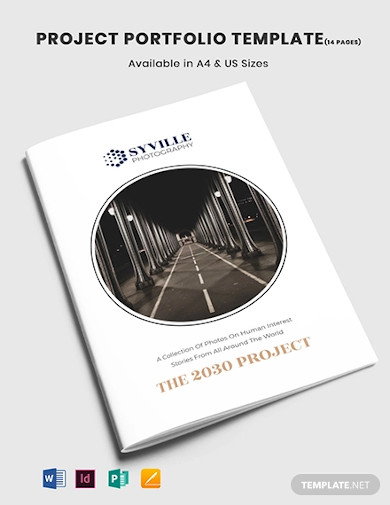10+ Project Portfolio Examples to Download
The content in the resume and application letter can make a person sound more capable than he or she actually is. And employers are taking notice of this. That is why some companies require their job applicants to present a project portfolio. This compilation of previous work is a better indicator of a person’s capability at a given task than his background. It is important to keep records and copies of your impressive work when you are considering climbing up the experience ladder. Further your career with project portfolio!
A project portfolio is a compilation of your career’s greatest and promising hits. The files show your competence and skills in your chosen trade. Your competitors might have polished template resumes, but you have an edge when you present a project portfolio during an interview or application. Employers can look through your work samples and decide if you are fit for the position. It is not enough to say that you have participated in several projects or closed the deals on several previous clients. It is more of a show-me competition, and you have to bring your A-game.
Your portfolio can come in many forms, depending on the nature of your work. But you can also apply techniques from other industries so that you can set yourself apart from the rest of the candidates. Although it is still the employer’s discretion if he or she would ask to see your project portfolio, it is a good idea to bring yours. Imagine a talk that goes like, “Oh, so you were a [previous position]. Is there any of your work that I might have seen?” You can hand in the evidence of your work.
Who Needs a Project Portfolio?
Independent architects who are looking for clients can collect samples of the buildings and spaces that they designed. Architecture portfolios can help convince an individual or a team that they can bring a vision to life. When they are looking to be employed in firms, choose the work that is in sync with the architecture firm they are eyeing on.
Professional and freelance photographers can create both physical and digital photography portfolio to show off their range and skills to their clients. When they want to be wedding photographers, then they should show the wedding pictures they took. It helps the clients imagine what getting your service would be like. They should arrange a well-curated collection of the photos that they specialize in.
Project managers can arrange a compilation of project-related documents, such as proposals, plans, approval letters, schedules, and budget plans. The project management portfolio is continuously updated. The team or company can show the collection to clients upon inquiry or to advertise the quality of work and specialization.
Simply put, everyone who wants to get somewhere in their careers needs a project portfolio. Career starters, shifters, and those wanting to improve can keep their project portfolios in a folder, a storage device, or on the Internet. Even though you feel happy in your job right now, it is good practice to compile your best works.
10+ Project Portfolio Examples
Confused about where to begin with your professional project portfolio? Worry not because we have prepared a wide range of templates to get you started! Browse through each sample to find what you need.
1. Project Portfolio Template
2. Project Management Portfolio Template
3. Project Portfolio Example
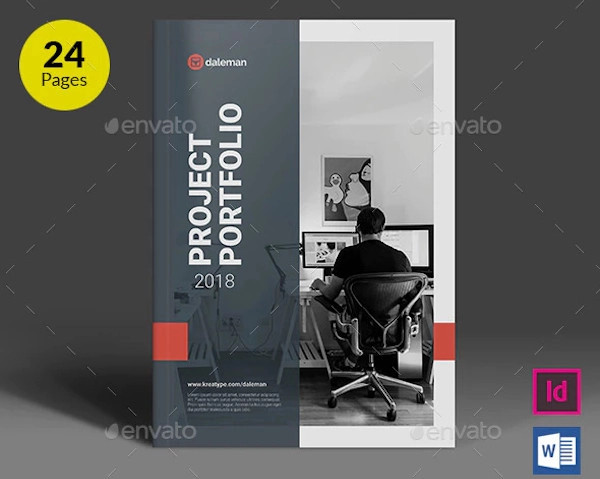
4. Project Portfolio in Vector EPS
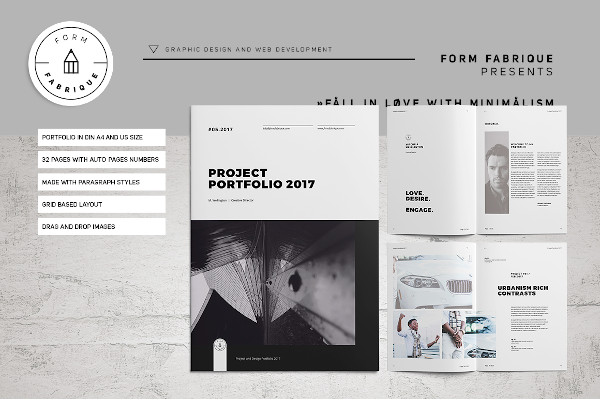
5. Project Portfolio Brochure
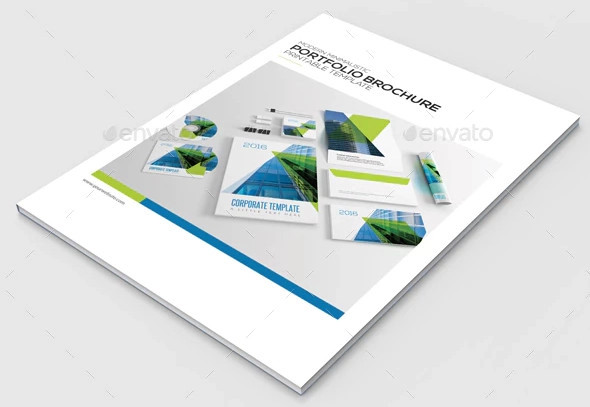
6. Modern Project Portfolio Example
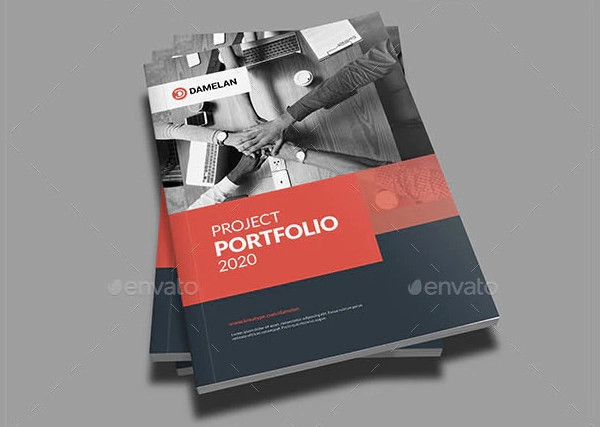
7. Design of Project Portfolio

8. Photography Project Portfolio

9. Project Portfolio Brochure Example
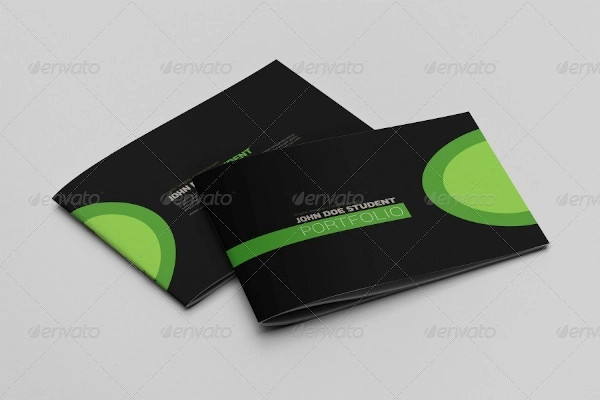
10. Web Project Portfolio Catalog Example

11. Project Portfolio Brochure in PSD

Work Hunting with Project Portfolio
Remember that this is your ticket to landing that job or next project. Therefore, you should make your project portfolios convincing. You cannot just expect to toss everything in there and hope to fish out something good. Let the portfolio speak for your competence. What should you include in your project portfolio to make a compelling argument and convincing sales talk for employers and clients alike? Learn more from the following tips on creating a portfolio.
1. Make a Digital Copy
Going digital isn’t just easy on the trees. You can store your portfolio on a cloud, or you can create a website specifically for it. Digital portfolios are easier to present to employers and clients because they are there when you need them. You do not need to protectively carry around the document for fear of it getting damaged and garnering you the wrong impression. When you publish your portfolio online, you can place the URL of the site on your resume. It adds substance to your resume. You do have to learn how to create and maintain the website. You might need to pay for software or program for this.
2. Choose Your Greatest Hits
Remember, project portfolios have to sufficiently argue for your competence in your career and make clients want to do business with you. Showcase a list of projects and work that show off your strength and skills. These show the employers and clients what you can offer and what they would be missing if they would go for someone else. Choose around ten fresh samples of your best work. These files should show that you are proficient, and you have the technical know-how that comes with the years of work experience.
3. Paint a Professional Image
Appearance is not everything, but it is an unavoidable instinct to run a visual appraisal on a person or situation. You do not want to look sloppy and underqualified in front of your next client or employer. This care for visuals should extend to your project portfolio. Dress your project portfolio for the job. Organize and arrange your documents so that they appear in a strategic order. You can lean on an arrangement format that shows your growth in your career. Visually pleasing presentation of output allows employers and clients to appreciate your work better.
4. Don’t Disclose Private Data
You take pride in your experience working with big companies and industry giants. It is a no-brainer that you should include this background in your work portfolio. However, err on the side of caution when dropping names and details. You should only put information that can be legally disclosed. Strategies, secret projects, to-be-launched products, and other details that are protected by a non-disclosure agreement have no business appearing in your portfolio. If you are in doubt, ask permission from previous employers or clients. Divulging sensitive and confidential information to gain favor will not win you points with prospective employers and customers.
Creating a project portfolio is about having foresight in your career. The samples of your best work help you gain clients and projects. The more projects you work on, the richer your portfolio becomes. Its benefits aren’t limited to that. You might not be in the same place in life a few years from now. Whether you are pursuing personal development or professional growth, you may want to look for another opportunity to augment your skills. And when you do decide to, let your project portfolio do the talking for you.



